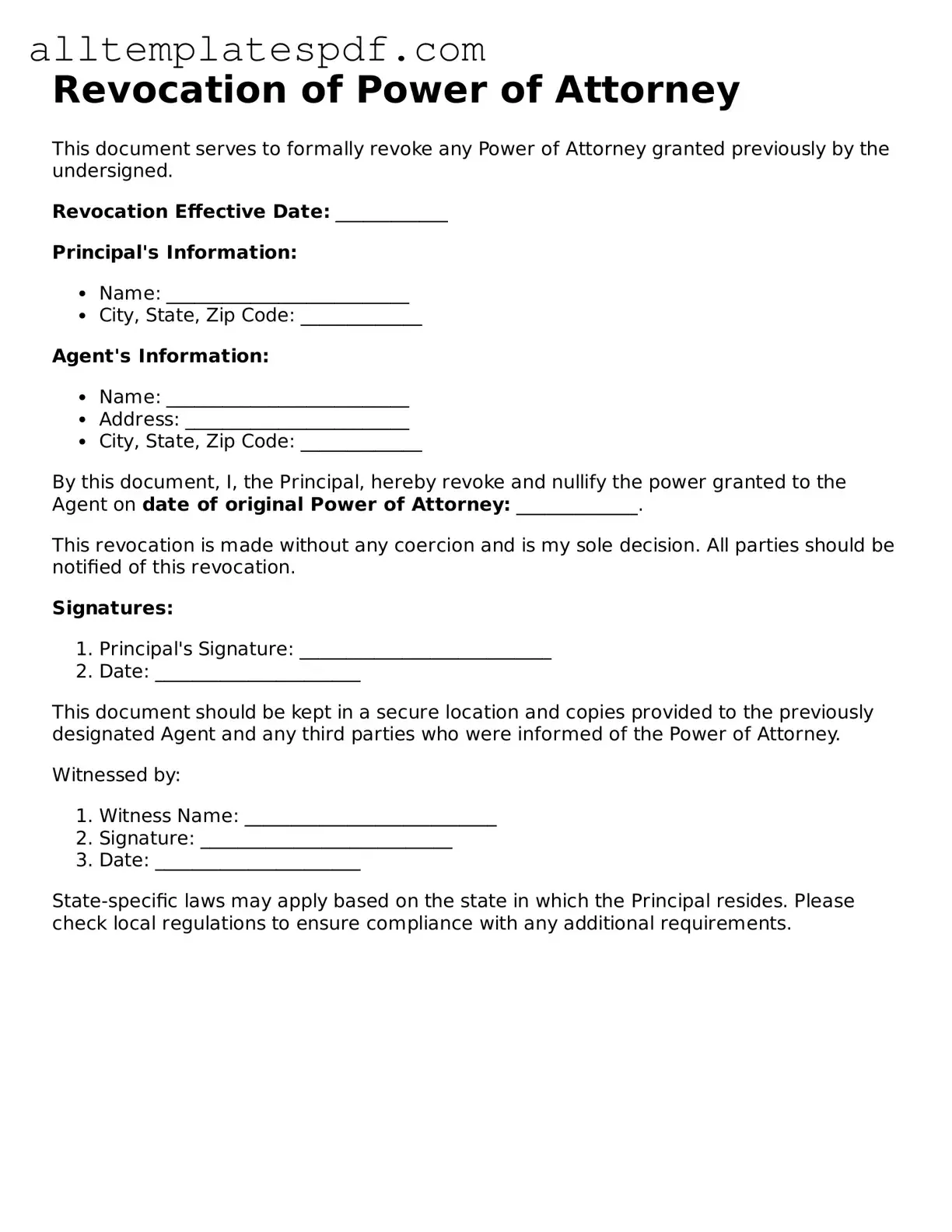Filling out a Revocation of Power of Attorney form is an important task that requires careful attention to detail. One common mistake individuals make is failing to clearly identify the original Power of Attorney. Without specifying the exact document being revoked, confusion may arise, leading to potential legal complications.
Another frequent error is neglecting to include the date of revocation. This date is crucial as it establishes when the authority granted under the original Power of Attorney is officially terminated. Omitting this information can result in disputes about the validity of the revocation.
People often forget to sign the form. A signature is necessary to validate the revocation. Without it, the document holds no legal weight. In some cases, witnesses or a notary public may also be required to sign, depending on state laws. Failing to follow these requirements can render the revocation ineffective.
Inaccurately completing the personal information section is another mistake that can lead to issues. This section should include the full name and address of both the person revoking the power and the agent. Any discrepancies in this information can create confusion and complicate the process of revocation.
Some individuals do not notify the agent of the revocation. Even if the form is properly filled out and signed, if the agent is not informed, they may continue to act under the assumption that their authority is still valid. This lack of communication can result in unauthorized actions being taken on behalf of the principal.
Another mistake is not retaining copies of the revocation form. Keeping a copy for personal records is essential. This documentation serves as proof that the revocation was executed and can be referenced in case of future disputes.
People sometimes fail to distribute the revocation to relevant parties. It is important to provide copies to any institutions or individuals who may have relied on the original Power of Attorney. This ensures that everyone is aware of the change and can act accordingly.
In some cases, individuals may attempt to revoke a Power of Attorney without proper legal grounds. It is crucial to understand that certain conditions may affect the ability to revoke authority, such as the principal's mental capacity. Attempting to revoke under these circumstances could lead to legal challenges.
Lastly, individuals often overlook the importance of seeking legal advice when necessary. If there are uncertainties about the revocation process or the implications of the original Power of Attorney, consulting with a legal professional can provide clarity and ensure that the revocation is executed correctly.
